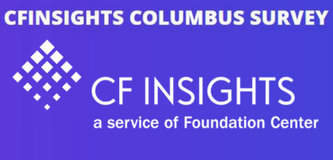Staff Pick: If a Free Press Can Strengthen Our Democracy, Who Will Strengthen Our Free Press?
Janet Camarena is director of transparency initiatives at Foundation Center.
This post is part of the GlassPockets’ Democracy Funding series, designed to spotlight knowledge about ways in which philanthropy is working to strengthen American democracy. The series will highlight new research and interviews with top democracy funders and recipients.
A free press is central to our democracy, but a strong, robust news operation does not come free. As the collapse of the newspaper industry leaves gutted newsrooms across the country with reduced capacity for news gathering, policy analysis, and original reporting, can the information needs of voters be met? Does the rise of social media, #FakeNews, and ideological media bubbles threaten our democracy by filling gaps in local and national news coverage with misinformation? And can foundation philanthropy help to turn around these troubling trends?
A new report published earlier this summer by Harvard University’s Shorenstein Center on Media, Politics and Public Policy attempts to answer such weighty questions by analyzing $1.8 billion in foundation giving to journalism and media from 2010 to 2015 to see what we can learn from existing funding priorities and special initiatives. A central finding of the research is that though there is much experimentation and innovation taking place as a result of these investments, it is not enough to address decades of shrinking revenues and shuttered newsrooms. The report also finds that it has fallen to too few national funders to fill the media gaps, and there is an urgent need for greater investment by a more diverse group of funders.
As Transparency Talk continues our series illuminating philanthropy’s role in strengthening democracy through the body of knowledge it has commissioned or produced on the topic, we shine the spotlight on this deep analysis of the impact of foundation funding into journalism and media, and implications for the health of our democracy. This report, and others like it, are all openly available via the new Knowledge Center in the Funding Democracy portal. The Knowledge Center, powered by IssueLab, is an open repository to which any foundation can freely add its knowledge.
STAFF PICK
Funding the News: Foundations and Nonprofit Media
PUBLISHERS
Shorenstein Center on Media, Politics and Public Policy at the Harvard Kennedy School
Northeastern University's School of Journalism
FUNDERS
Barr Foundation; Heising-Simons Foundation; Media Impact Funders
QUICK SUMMARY
The analysis of more than 6,500 grant makers suggests the money they are pumping into journalism-related ventures is neither advancing the media's democratic function nor filling the gap left by rampant newspaper closures.
FIELD OF PRACTICE
Journalism and Media
WHAT MAKES IT STAND OUT?
Many foundations commission and produce reports assessing the impact of their funding. Sadly, precious few make these kinds of report public, particularly in cases like this in which there is a focus and diligence on identifying the gaps, pain points, and insufficiencies of the existing funding. This comprehensive review of the foundation funding flows offers both a helpful snapshot of the top funders, and funding trends, while also providing an honest assessment of what is needed to improve the effectiveness of these efforts.
The report is arranged into three parts: section one charts the growth of the nonprofit news sector leading up to the 2016 election; section two provides a detailed analysis of 32,422 journalism and media-related grants totaling $1.8 billion distributed by 6,568 foundations between 2010 and 2015; and the final section highlights the report’s main findings and gives the reader a sense of the direction of the field with a look at significant emerging initiatives.
Introductory context also helps clarify the severity of the situation, and after reading the gloomy financial picture of the media landscape it is enough to make anyone wonder how philanthropy alone can turn things around. For example, at the beginning of the Internet era in 2000, ad revenue for print advertising in newspapers reached $67 billion. In 2014, adjusting for inflation, digital and print revenue yielded only $20 billion, meaning that once you adjust for inflation, newspapers were making less revenue than they did in 1950! This field-wide crisis set the stage for a number of resourceful journalists to create a variety of local and national nonprofit digital news start-ups, which were mostly supported by donors and foundations. However, this led to a “Darwinian” ecosystem of support that created more challenges than solutions given the state of competition, local economies, and “the fickleness of funders.”
Other media funding challenges that the report surfaces include:
- A “Pack Philanthropy” culture in which a few nonprofits are able to quickly scale due to large investments from a number of foundations, leaving others financially vulnerable with too little support;
- The new field of start-up journalists had little experience running nonprofits and were not savvy at donor cultivation or diversifying revenue streams;
- The tendency among foundations to finance innovative start-ups with “seed funding” only to move on before the start-up is equipped to overcome the funding deficit;
- Because foundations tend to generally be risk-averse, convincing them to fund news start-ups is a hard sell;
- According to an API survey conducted in 2015, 52 percent of funders reported they make media grants in areas where they want to affect public policy, and a third of funders indicated they fund media in order to advance a “larger strategic agenda” indicating there may be pressure on news nonprofits to align their work around the political objectives of their funders;
- Local news has been particularly hard hit as most small, place-based funders and community foundations lack the expertise or track record in funding local media, and this has led to the creation of “nonprofit media deserts” outside of the large metro areas on the East and West Coasts where most large foundations that support media are based.
Highlights of foundation funding patterns between 2010 to 2015 include:
- The largest funder of nonprofit media related activities is the Freedom Forum giving nearly $175 million in funding, almost all of which goes to support the museum activities of the Newseum, which it operates;
- The second largest funder in this area is the Knight Foundation with approximately $133 million in support of a broad array of journalism activities, including being the leading funder for the majority of start-up news nonprofits with $53 million given to such activities, and Knight also accounts for a 20 percent of all grant dollars supporting local/state nonprofit news;
- Approximately half of all funding was earmarked to established, “legacy” media nonprofits such as public radio and television stations, and long established magazines;
- An estimated $331 million or 19% of all foundation funding supported mostly newer, digital nonprofit media including national nonprofit news organizations, local nonprofit news organizations, and university-based media;
- Foundation funding for public media tends to be highly concentrated across a small number of grant recipients. About two dozen recipients accounted for 72 percent of all foundation funding to public media;
- Ten states accounted for 83 percent of total foundation funding to public media indicating that large regions of the country lack access to nonprofit news apart from what might be provided by public television and radio;
- Nationally, news nonprofits depended on about two dozen foundations for nearly 70 percent of the grants awarded.
The report provides an open invitation for a greater variety of donors to become involved. The transparency a report like this provides is a good strategy to motivate additional funding for the ambitious goal of sustaining a robust press in order to preserve the health of our democracy.
KEY QUOTE
“A final concern voiced among those we interviewed is that patterns in foundation funding to date reflect ‘elites supporting elites,’ financing those nonprofit journalism initiatives most likely to be consumed by audiences who already read the New York Times or Washington Post and listen to NPR. Our findings specific to the concentration of funding within a few national news nonprofits, the disproportionate focus on the environment and health as subjects, and deep geographic disparities in funding that favors the East and West Coasts all suggest there is merit to these critiques. Apart from these geographic differences and subject biases, several of our interviewees not only expressed concerns that minority and ethnic communities are being underserved, but also that women who found or run news nonprofits are receiving insufficient funding in comparison to their male counterparts, a likelihood that merits further analysis.”
--Janet Camarena


